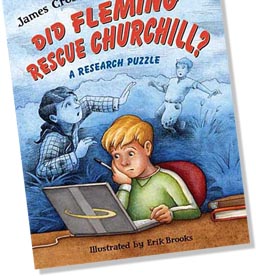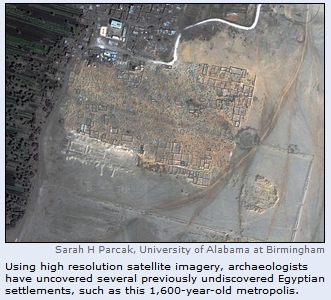 David Rohl is a modern-day, British Indiana Jones! He’s been shaking up the stodgy world of Egyptian archeology since the early 1990s, when he published a ground-breaking book arguing for a radical revision to the traditional chronology of Ancient Egypt – Pharaohs and Kings: A Biblical Quest.
David Rohl is a modern-day, British Indiana Jones! He’s been shaking up the stodgy world of Egyptian archeology since the early 1990s, when he published a ground-breaking book arguing for a radical revision to the traditional chronology of Ancient Egypt – Pharaohs and Kings: A Biblical Quest.
A few years ago, Rohl wrote a one-volume reconstruction of the history of the Old Testament. His imaginative account marshals all of the most recent archeological evidence to illuminate and make meaningful the historical narrative of the Bible. That book, From Eden to Exile, has now been published in the United States by Greenleaf Press.
 It is most refreshing to read an account of the history of Israel by a noted academic / archeologist which treats the biblical text respectfully! Not only that, but David Rohl cites an extensive collection of archaeological finds and artifacts which confirm the historical accuracy of the biblical account and attest to the historical reality of the Patriarchs. Rohl is the pioneer among a growing number of modern scholars who have challenged many of the traditional assumptions and chronologies of the ancient world. They are challenging the 19th and early 20th century theories and reconstructions of the history of ancient Egypt and Mesopotamia. Those theories were formulated against a background of widespread skepticism (at times downright hostility) towards the biblical accounts. Rohl approaches the biblical texts with a quite different attitude. He begins by affording them the benefit of the doubt and taking them seriously. The result is a startling confirmation of the biblical record and a revision of the chronology of the ancient world.
It is most refreshing to read an account of the history of Israel by a noted academic / archeologist which treats the biblical text respectfully! Not only that, but David Rohl cites an extensive collection of archaeological finds and artifacts which confirm the historical accuracy of the biblical account and attest to the historical reality of the Patriarchs. Rohl is the pioneer among a growing number of modern scholars who have challenged many of the traditional assumptions and chronologies of the ancient world. They are challenging the 19th and early 20th century theories and reconstructions of the history of ancient Egypt and Mesopotamia. Those theories were formulated against a background of widespread skepticism (at times downright hostility) towards the biblical accounts. Rohl approaches the biblical texts with a quite different attitude. He begins by affording them the benefit of the doubt and taking them seriously. The result is a startling confirmation of the biblical record and a revision of the chronology of the ancient world.

Orthodox and conservative Christians will disagree with David Rohl’s retelling/reconstruction of the lives of Adam, Enoch, and Noah, but his version does have the admirable quality of treating all of them as historical figures. This stands in stark contrast to the past 150 years of liberal and skeptical scholarship which treats the biblical text as little more than a pious fraud. Because of the antiquity of these figures, and the scarcity of archeological finds and textual references, Rohl’s narrative here is little more than speculative conjecture – imaginative, but not really historical.
Rohl is on firmer ground, and has more to work with, when he describes the dispersion of the Mesopotamian culture and contacts (perhaps even a conquest?) with the Nile Valley. The unification of the Nile under the earliest pharaohs is murky territory, but Rohl’s speculative account ties more of the threads together than any other proposed narrative.
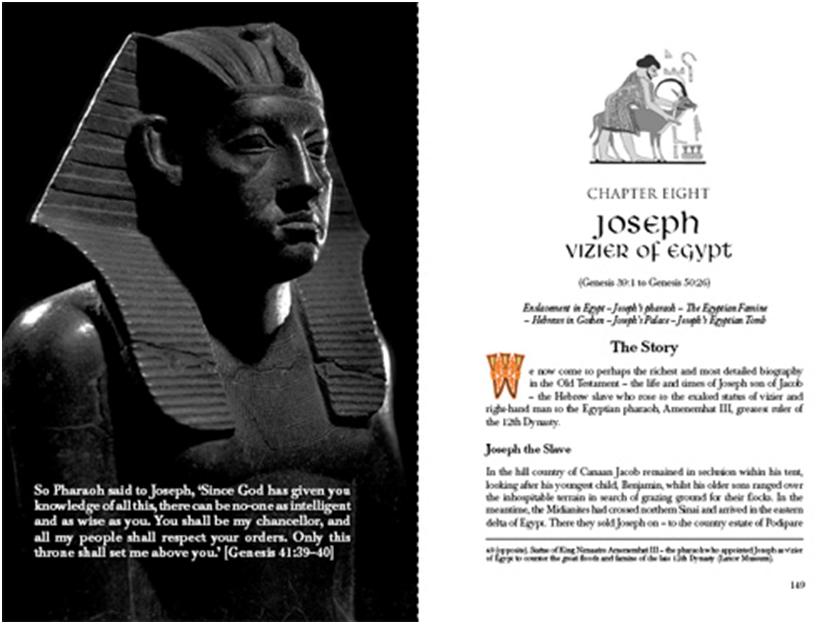
With Joseph, Rohl reaches territory where he is expert – Egypt. From here on the narrative is on surer footing, and the archeological evidence expands many-fold. The chapters on Joseph, Moses, and the Exodus are arguably the best in the book. Rohl paints a detailed picture of Egyptian culture and Pharaoh’s court. His account of the oppression of the Hebrew slaves draws on archeological finds made at the delta settlement of Avaris, first found and excavated in 1966. Rohl follows Josephus in crediting Moses as not just a “prince of Egypt,” but the successful commander of the Egyptian army which defeated and conquered Kush. Although Rohl opts for natural phenomena to account for the plagues of the Exodus, he produces compelling evidence from Egyptian sources that document and confirm the series of disasters which devastated Egypt.
The chapter on Joshua and the Conquest is a tour-de-force for Rohl. It provides him with an opportunity to review the history of archeology at Jericho and spell out in detail just where traditional scholars went wrong. Rohl shows how the New Chronology fits the facts much better and integrates the surviving documentary sources (including the Bible) with the archeological evidence.
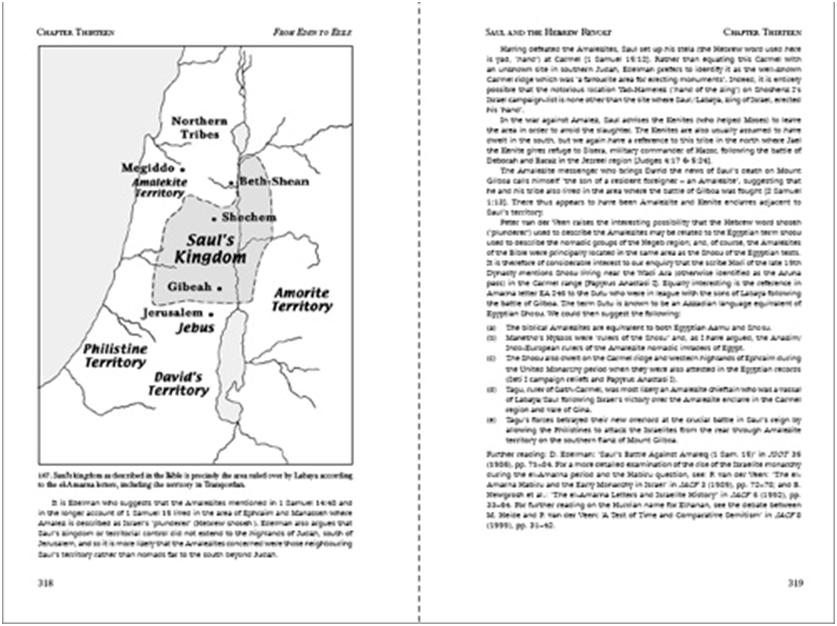
In the chapter on Saul, Rohl presents startling evidence that the first king of Israel was a contemporary of the heretic Pharaoh Akhenaton. He quotes from the El Amarna letters to show that the Philistine cities of the coastal plain were sending frantic appeals to Pharaoh Akhenaton for help in putting down a rebellion by the nomadic herdsmen of the highlands under the leadership of their chief, Labaya, who Rohl identifies as Saul of the tribe of Benjamin. Even more intriguing, Rohl identifies a worshipper of the Hebrew God “El” at the court of Pharaoh Akhenaton. In the archives of Armarna, Rohl finds not only letters about Labaya, but also an actual letter from Labaya. The details of Labaya’s life and subsequent death in battle against a Philistine coalition on the slopes of Mt. Gilboa closely match the details of Saul’s life from the book of Samuel. They are a powerful confirmation of Rohl’s New Chronology.
Rohl continues to mine the Amarna letters for confirmation of the details of the reign of David. The letters record the actions of the two “sons of Labaya,” Mutbaal (Ishbaal) and Elhannan (David) as well as their generals Ayab (Joab)and Abner. Rohl cites the weakened Egyptian government and army under Akhenaton and Tutankhamun as the setting for David’s conquest of Jerusalem and expansion of the nation of Israel. David was expanding to fill the vacuum left by Egypt’s weakness during the later rulers of the 18th dynasty.

Solomon’s marriage to an Egyptian princess, in Rohl’s reconstruction, thus cements an alliance with General Haremheb who had succeeded Tut and his uncle, Ay, as Pharaoh. Even more startling is Rohl’s assertion that in the 33rd year of Solomon’s reign, it was troops from Israel who turned the tide at the battle of Kadesh, where the nineteen-year-old Ramesses II defeated Muwatali in 939 BC.
The division of Israel after Solomon’s death is aided by the intervention of the Pharaoh Shishak who marched on Jerusalem in the fifth year of the reign of Rehoboam.
The rest of Rohl’s narrative is straight-forward, as we enter the period of history when the biblical kings of Israel and Judah are mentioned in the text of neighboring nations and we have firm synchronicities established with Assyria and Nebuchadnezzar.
Rohl’s epilogue to this ambitious project is perhaps his best prose. In a brief, nine-page essay he states the problem posed by the dating of Solomon’s kingdom to the Iron Age and the inflation of the chronologies of the Egyptian Pharaohs caused by the assumptions of 19th century historians. Current traditional archeological research can find no confirmation of the Jews’ sojourn in Egypt, or the Exodus, or the Conquest, or even of the flourishing of the nation of Israel under David and Solomon. And so the archeologists dismiss the Bible as historically untrustworthy. Rohl, with a thorough re-examination of the dating sequences of the ancient world revises the chronologies. He goes back and looks at the same places, but at different times and finds countless confirmations of the details of the biblical account. His history of both Egypt and Israel is “satisfyingly supported by the stratigraphic record and colourfully enhanced by the contemporary texts of Israel’s powerful neighbours. It provides a solid and ultimately believable historical foundation for the religious messages of the biblical text.”
The book is beautifully laid out and illustrated with maps derived from satellite photography as well as stunning photographs of ancient artifacts – kudos to David Rohl for the photography and Ditas Rohl for the design & layout. It is also brilliantly written. Rohl has a knack for taking the details of archeology and explaining sophisticated concepts and analyses in ways that a layman can easily understand. This is no small accomplishment.
Christians will not agree with Rohl’s speculations about the details behind the book of Genesis. Indeed, it seems to me that Rohl has weakened his case by inventing a narrative for the earliest time period where he has the least amount of evidence. But when he reaches Joseph and Egypt, all those who respect and appreciate the biblical text must acknowledge that Rohl has done great service in re-evaluating the evidence and synthesizing it in a new and more accurate structure that better explains the ancient world – and in the process confirms the historical accuracy of the Old Testament.
Thus, while there are many things in From Eden to Exile that I would take issue with, there is also much that I appreciate. And because I appreciate what I can only judge to be an honest, forthright, original work of scholarship, I am proud to make From Eden to Exile
available to the reading public (and the academic world) once again so that David Rohl’s contribution to the New Chronology will continue to find its audience. It will surely provoke, agitate, and force those who read it to re-think their ideas about the ancient world. It is my hope that it will also play a part in raising up a new generation of ancient historians who will continue to investigate the evidence, continue to search for archeological clues, and continue the ongoing discussion of the historical events recorded in the Old Testament.
From Eden to Exile is a paperback, 528 pages and is available directly from Greenleaf Press for $24.95. It is also available through Amazon.com.
Bookstores and other retailers may order copies directly from Greenleaf Press or through Ingram Book Group.
Rob Shearer, Publisher
Greenleaf Press


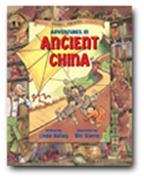


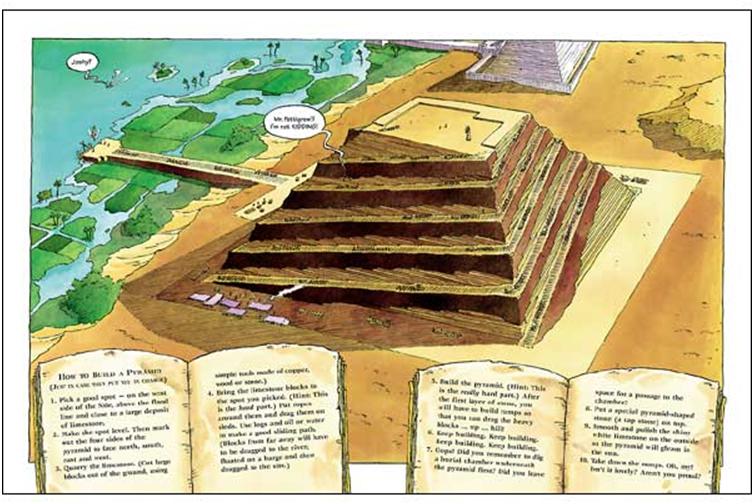
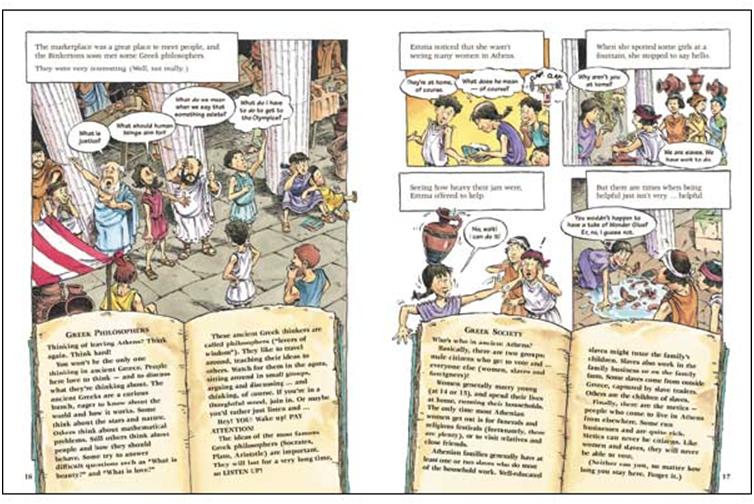



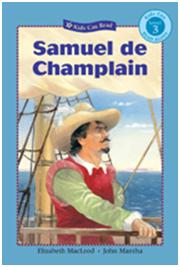
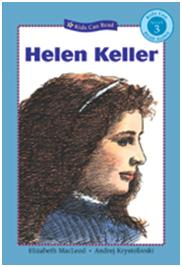
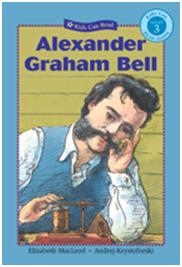
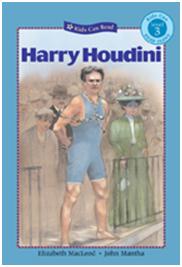

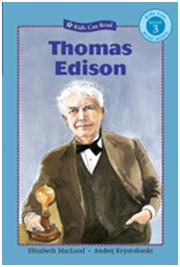


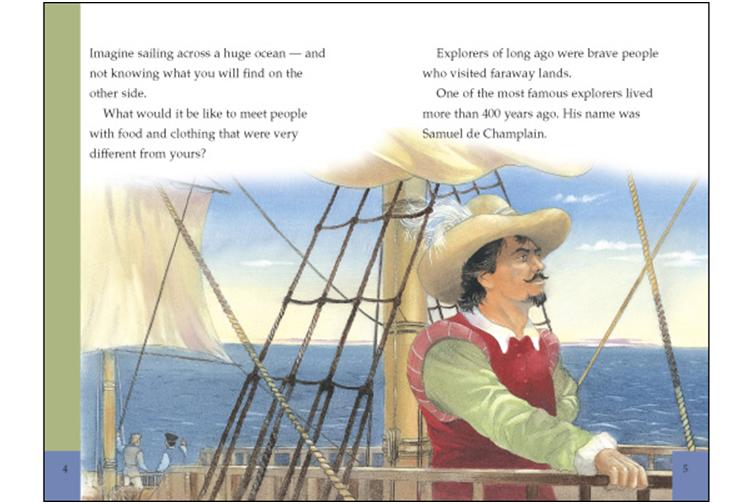

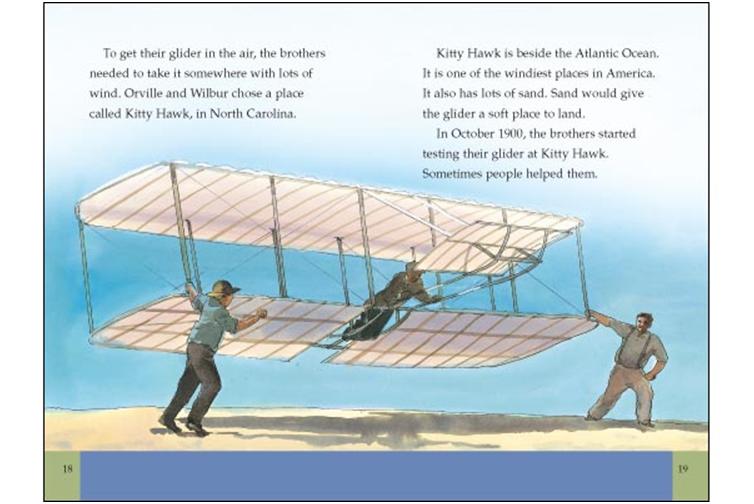
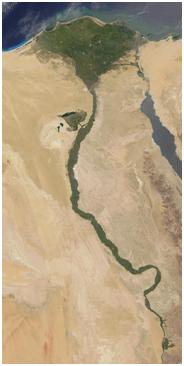 The importance of understanding Egyptian history and culture can hardly be over-estimated. Egypt is the country mentioned most often in the Old Testament. Israel’s prophets foretell the future not just for Israel, but for Egypt as well.
The importance of understanding Egyptian history and culture can hardly be over-estimated. Egypt is the country mentioned most often in the Old Testament. Israel’s prophets foretell the future not just for Israel, but for Egypt as well.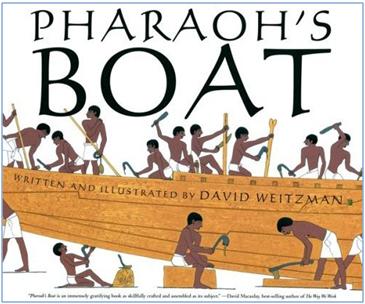
 To tell the story of their discovery and re-assembly, Weitzman switches to a more modern 3-dimensional representational style. The story of the painstaking research that went into re-assembling the boat is as fascinating as the story of their original construction. It was a 3-dimensional jigsaw puzzle with 1,200+ pieces, and no pictures or instructions. Before the Egyptian archeologist, Ahmed Youssef Moustafa, chief of the Restoration Department of the Egyptian Antiquities Service was satisfied, the boat had been put together and taken apart five times. Each time, the team of archeologists learned something new. To solve several particularly difficult problems, Ahmed went to modern Egyptian boat-makers on the banks of the Nile and served as an apprentice, asking questions about the details of the techniques they used. It turns out that many things have stayed the same for over 4,000 years.
To tell the story of their discovery and re-assembly, Weitzman switches to a more modern 3-dimensional representational style. The story of the painstaking research that went into re-assembling the boat is as fascinating as the story of their original construction. It was a 3-dimensional jigsaw puzzle with 1,200+ pieces, and no pictures or instructions. Before the Egyptian archeologist, Ahmed Youssef Moustafa, chief of the Restoration Department of the Egyptian Antiquities Service was satisfied, the boat had been put together and taken apart five times. Each time, the team of archeologists learned something new. To solve several particularly difficult problems, Ahmed went to modern Egyptian boat-makers on the banks of the Nile and served as an apprentice, asking questions about the details of the techniques they used. It turns out that many things have stayed the same for over 4,000 years.

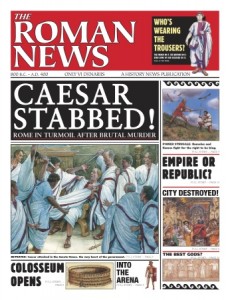

 There is a marvelous pop-up Egyptian boat.
There is a marvelous pop-up Egyptian boat. Complete with a shaduff on-shore, showing how the Egyptians raised water from the Nile for irrigation.
Complete with a shaduff on-shore, showing how the Egyptians raised water from the Nile for irrigation. There is the warrior-Pharaoh Rameses II in his fighting chariot at the battle of Kadesh.
There is the warrior-Pharaoh Rameses II in his fighting chariot at the battle of Kadesh. There is a wonderful 3-D depiction of Hatshepsut’s temple at Deir el-Bahri
There is a wonderful 3-D depiction of Hatshepsut’s temple at Deir el-Bahri

 The entire connected scene folds out to four feet long.
The entire connected scene folds out to four feet long.